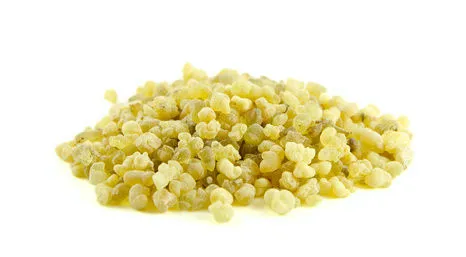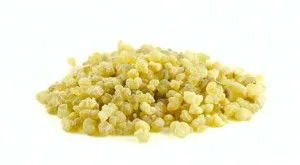
- Share on Facebook595
- Share on Pinterest
- Share on Twitter
Many of this season’s songs and stories feature two famous resins, frankincense and myrrh, that have been used in spiritual ceremonies and for their medicinal properties since ancient times.
Frankincense and myrrh are most commonly known in the Christian tradition for their appearance in the New Testament of the Bible as gifts brought by the Wise Men, or Magi, to Bethlehem. Frankincense has also been discovered among ancient Egyptian remains.
Both frankincense and myrrh are gum resins that are extracted from shrub-like trees in the Burseraceae family, which grow in dry climates across parts of Asia and Africa, including India, Yemen, Saudi Arabia, Ethiopia and Somalia.
Since they are closely related, their healing characteristics are fairly similar, with a few notable differences.
Frankincense
Frankincense is a white-colored resin from the Boswellia tree species, which is often made into an essential oil. This oil is often used as an overall health tonic, as it offers benefits to all of the body’s systems. One of its star functions is helping the body to optimally absorb nutrients.
Frankincense essential oil has antiseptic and disinfectant properties, and may help boost your immune system to more effectively ward off illness. It can be topically applied to minor cuts and scrapes to protect against infections, and it also functions as a coagulant to help wounds stop bleeding. One ancient way of using frankincense to disinfect is to burn it as an incense and rely on the cleansing properties of the smoke.
This essential oil promotes relaxation by helping to open airways and reduce blood pressure, and is connected to feelings of mental tranquility, making it an excellent oil to use for meditation or a de-stress massage.
The use of frankincense combined with regular meditation could be very helpful in decreasing anxiety. To get the sweet, earthy aromatherapy circulating throughout your meditation space, put a few drops of the oil in a diffuser, or burn in an incense holder.
Other benefits associated with frankincense include relieving indigestion, helping to fade wrinkles and scars and reducing acne. It has also been used traditionally to regulate menstrual cycles and aid with a variety of menstruation-related issues.
Myrrh
Myrrh is a red-hued resin that hails from various species of the Commiphora tree, and also often takes the form of an essential oil. Its similarities to frankincense are many, including its sedative properties and its benefits for use during meditation.
Like frankincense, myrrh also aids in digestion, can help fade scars, may strengthen the immune system, has been traditionally used to regulate menses and can be applied topically to disinfect wounds. It also helps to ease respiratory trouble and may act as a decongestant.
Myrrh has a characteristic that contracts the skin, and has therefore been used to strengthen the gums and help prevent hair loss. It also has fungicidal properties, and may be beneficial to skin ailments such as athlete’s foot, eczema and ringworm.
Myrrh can also help relieve chapped skin, stimulates blood circulation throughout the body, and can be used during the course of a detox, as it increases sweat to rid the body of toxins.
 When purchasing essential oils, it is very important that you choose a quality, therapeutic-grade variety. If the oil that you choose is less-than-quality, the benefits may be severely compromised – or non-existent – and you may be introducing unwanted chemicals into your body.
When purchasing essential oils, it is very important that you choose a quality, therapeutic-grade variety. If the oil that you choose is less-than-quality, the benefits may be severely compromised – or non-existent – and you may be introducing unwanted chemicals into your body.
If you are going to be using essential oils internally, be sure that the oil is also food-grade, and that you talk to a naturopathic practitioner before beginning, as essential oils are very potent.
Frankincense and myrrh should not be used during pregnancy, and myrrh can be toxic in excess, so be sure that you speak with a naturopath about how much you need for specific functions, even topical applications.
When used safely and correctly, both frankincense and myrrh essential oils can do your body and mind a world of good, and are very fitting for the holiday season.
-The Alternative Daily
Sources:
http://www.organicfacts.net/health-benefits/essential-oils/health-benefits-of-frankincense-essential-oil.html
http://gentleworld.org/magical-and-medicinal-frankincense-and-myrrh
http://science.howstuffworks.com/life/botany/question283.htm
- Share on Facebook595
- Share on Pinterest
- Share on Twitter

